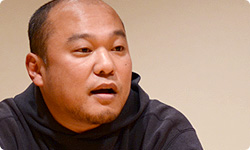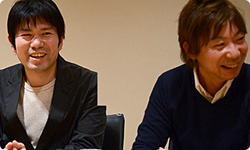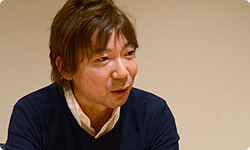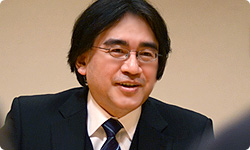2. The Second Lap of Development
What kicked off Resident Evil: The Mercenaries 3D was we needed to actually run a game on a Nintendo 3DS system, so we took Resident Evil 5 and ran it on a Nintendo 3DS, and the impact it made was more than we had imagined.
Then we thought, “We can make this into a product.” The difficulties of moving this forward as its own project aside, there was reason enough to make it just in terms of experience. With regard to the controls, we were able to make changes to Mercenaries and finish Revelations looking at the players’ feedback. And by making Mercenaries first, I feel like we were able to determine the capabilities of Nintendo 3DS. In terms of it being a developmental challenge, I would say that Mercenaries is the one that’s really pushing it hardware-wise.
The Resident Evil Revelations team had experienced making Resident Evil: The Mercenaries 3D, so they were on their second lap of development, allowing them to make it smoothly. Resident Evil: The Mercenaries 3D made use of knowledge from Resident Evil Revelations, and Resident Evil Revelations drew on feedback from Resident Evil: The Mercenaries 3D, so I feel like we were able to interact with the players.

That’s like some of the members of Nintendo who made both nintendogs + cats9 and Mario Kart 7.10 They did two rounds of making games for Nintendo 3DS as well. Some things you just don’t know until you finish making the game. One reason Revelations reached its degree of completion must have been from your experience making Mercenaries. 9nintendogs + cats: A communication game released for the Nintendo 3DS system in Japan in February 2011. 10Mario Kart 7: An action-racing game released for the Nintendo 3DS system in December 2011.
Saying this might get me in trouble, but because of that, we could have set the deadline sooner than actually planned.
Everyone worked twice as much. (laughs)
Yes. (laughs) About one year ahead of time, we were able to address all kinds of problems you might expect to arise about six months before completion, so Resident Evil Revelations went really smoothly.
You say it like it’s nothing, but we were the ones scrambling around! (laughs)

Oh, sorry. Thanks for that, really.
Well, in the end it was a big plus, so it’s good we did it.
While we were making Mercenaries, there was work to do aside from the actual programming, like the script for Resident Evil Revelations, so I think it was an efficient way to work. And the staff worked two or three times as much, which I’m incredibly grateful for.
What was that like as one who had to work that hard?
To be honest...the development periods overlapped completely.
Mercenaries had reached a certain point to let you breathe around the end of 2010.
Hori-san, what do you think was the secret that allowed you to create such impressive visuals in such a challenging schedule?
I think the visuals went smoothly because we had decided up front that the key concept was horror and it was clear that the script was based on the sea and a ship. Kawata-san pulled me in after E3.

I asked him to take the demo visuals that we had barely pulled off in time for E3 and turn them into something that would run as a game.
But you wouldn’t like it if you made visuals to run in the game and someone said, “They don’t look as good.”
Right. So I talked with the programmers and checked the memory and thought about what to do. Part of my job was also consulting with others on level design11 - stage design and layout - and making decisions as we went along. 11Level design: Designing the spaces, environments, difficulty and so on for the map and areas in the game.
Do art directors also determine the direction to take with level design at Capcom?
While it’s not always the case, for this title I was the one responsible for it. I made decisions like, “The game is like this, so we have to go with this type of design.”
The way you design from function is a lot like our approach at Nintendo.

Hori-san was doing something a lot like planning. In addition to making the visuals, he proposed a lot for the makeup of gameplay.
As I worked in accordance with the plans for the game, I made decisions about design.
In that way, we were able to follow the concept for Revelations while making full use of the features of the Nintendo 3DS system and never departing from the horror direction we wanted to take. I think that’s why we were able to make it in such a miraculously short period of time.
Looking at the volume and quality of the final product, I do get the feeling that development was very concentrated.
I think my experience working on Resident Evil 5 (RE5) was a plus for me as well. In terms of RE5, we received many comments from the fans saying they wanted more horror, so this time we were able to make up for what we weren’t able to put in RE5 without hesitating.
Lots of people we have talked to in the foreign media have also said, “Revelations is horror, right? That’s awesome!” I think it is the kind of game that will be appealing to such fans.
It has more personality.
Yes. When Nakanishi-san doesn’t hesitate, he works fast. The massive amount of work he took care of was another big factor. I’ve never praised him to his face, though. (laughs)